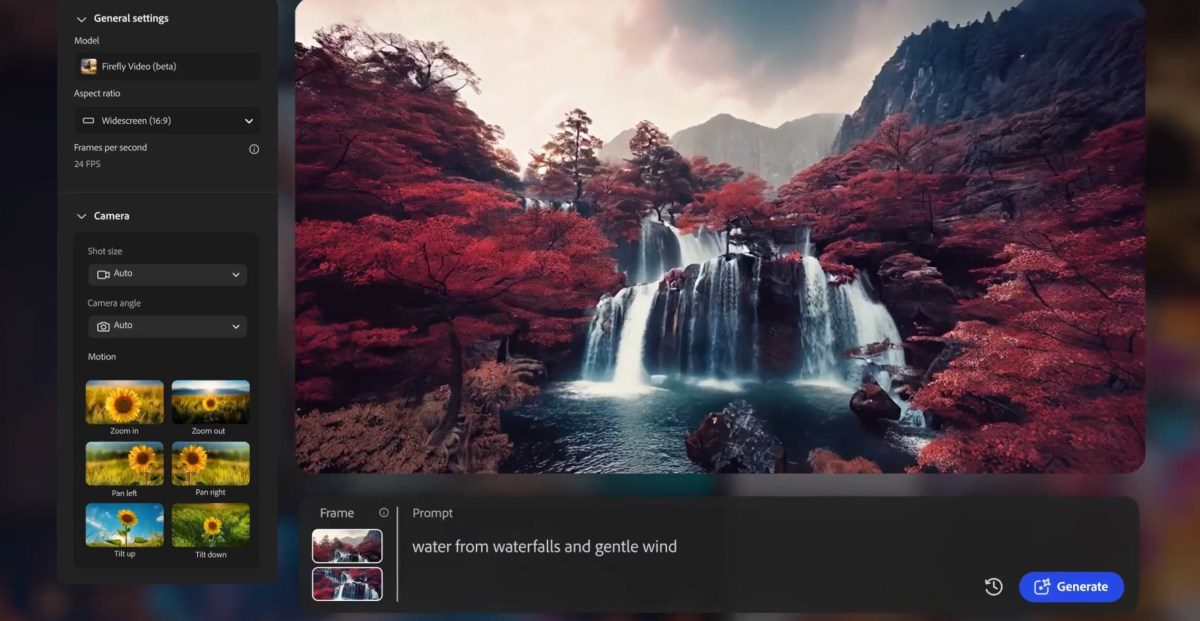
Adobe’s Generate Video feature offers two innovative functionalities: Text-to-Video and Image-to-Video. As the names suggest, Text-to-Video enables users to create videos solely based on text descriptions, while Image-to-Video allows the inclusion of a reference image with the prompt to kickstart the video creation process. This tool also provides various customization options to enhance the final output, including the ability to simulate different styles, camera perspectives, motion dynamics, and shooting ranges.
Videos produced by this feature now boast a quality of 1080p at 24 frames per second, an upgrade from the previous 720p standard. The generation time for both Text-to-Video and Image-to-Video is approximately 90 seconds or more, producing clips that last up to five seconds—shorter than the 20-second limit offered to Sora users. Adobe is actively developing both a quicker, lower-resolution “ideation model” and a 4K version, which are set to be released soon.
Additionally, Adobe has enhanced its Firefly web application, which houses its suite of generative AI tools. The revamped interface now integrates seamlessly with Creative Cloud applications, including Photoshop, Premiere Pro, and Express, streamlining the process of moving and editing assets generated by AI. Firefly is trained on content that is either in the public domain or licensed for commercial use, ensuring that users can utilize its tools without concerns over copyright infringement. Adobe markets the Generate Video tool as “production-ready,” catering to creators who aim to incorporate AI-generated footage into their film projects.
In the competitive landscape of AI video technology, Adobe is facing increasing pressure. Companies like Sora, Google, ByteDance, and Pika Labs are rapidly advancing their generative AI video tools. For instance, Google is currently beta testing its second-generation Veo AI video model, which has garnered positive feedback in early demonstrations. While Adobe’s Firefly offers significant commercial potential, the company must continue to match its competitors in terms of quality and innovative features.
Starting today, two additional tools will be made available to the public in beta through the Firefly web app, though these tools require a subscription. Scene to Image allows users to develop their own reference images for AI creations utilizing built-in 3D capabilities and sketching features, seemingly derived from the “Project Scenic” initiative announced by Adobe last October. The Translate Audio and Video tool facilitates the translation and dubbing of audio into over 20 languages while maintaining the original speaker’s voice characteristics.
Adobe is also introducing two new subscription plans for Firefly, which include credits to utilize the service’s models. The Firefly Standard plan begins at $9.99 per month, offering 2,000 video/audio credits and allowing up to 20 five-second video creations in 1080p quality. The Firefly Pro plan, priced at $29.99, provides 7,000 credits and up to 70 five-second 1080p video generations. A significant benefit of both plans is the unlimited access to Firefly’s imaging and vector capabilities.









